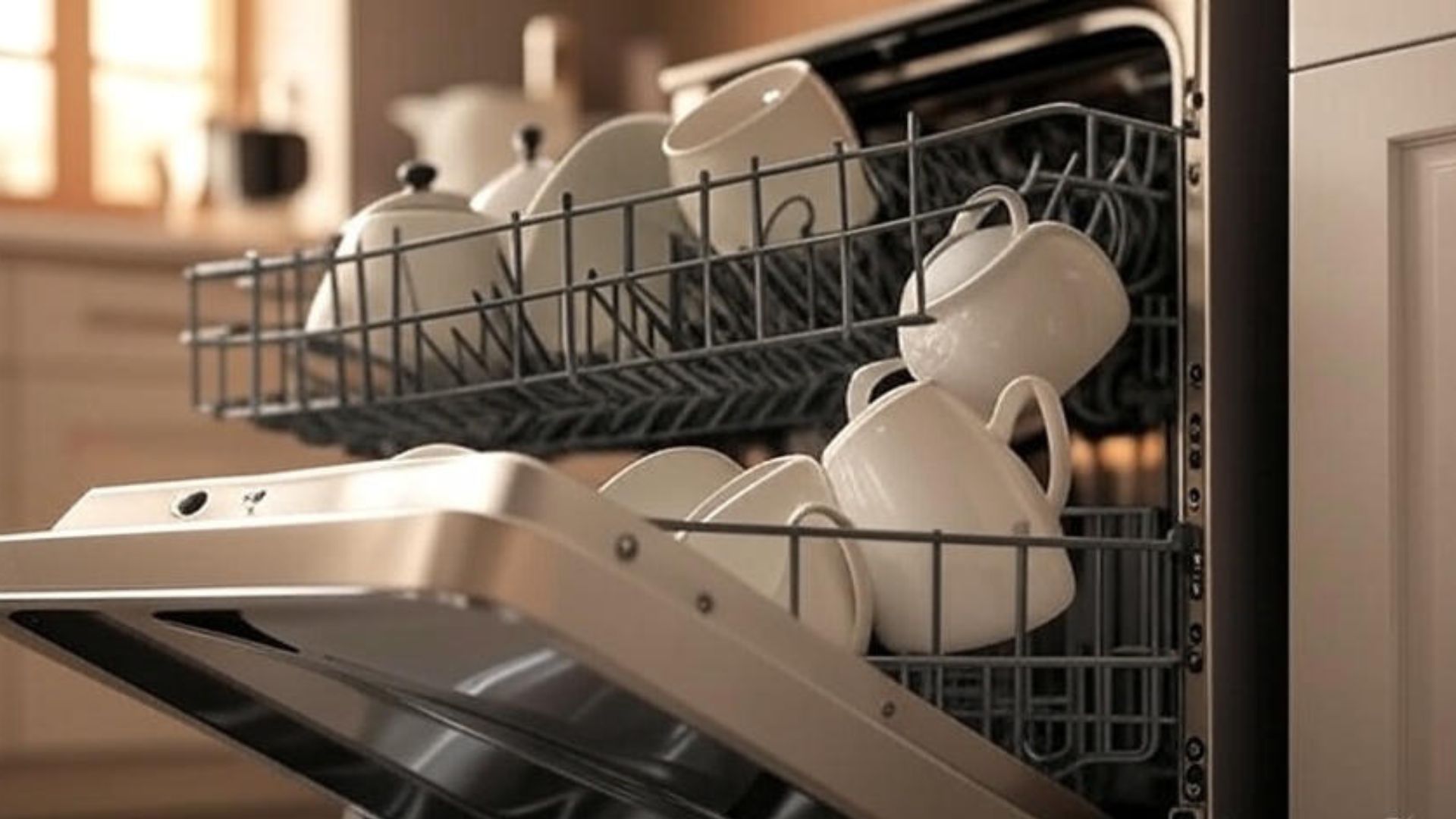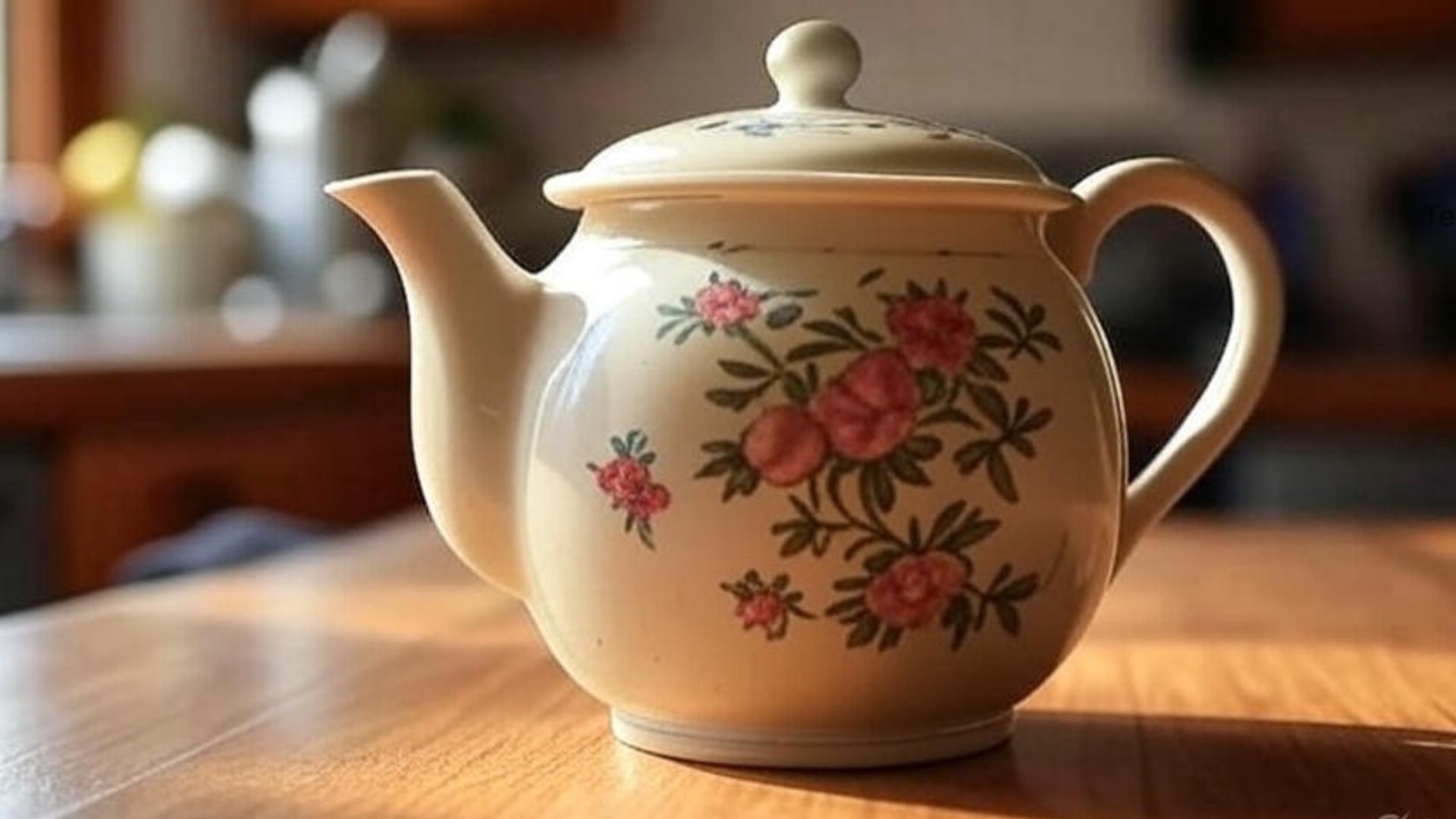Your teaware is more than just a set of cups and pots—it’s part of a ritual, a daily moment of calm, and in many cases, a cherished art form. Whether you own a delicate porcelain cup, a traditional Yixing clay teapot, or a sturdy glass infuser, proper storage and care are essential to keep your collection safe, functional, and beautiful for years to come.
This comprehensive guide will walk you through everything you need to know about storing your teaware safely, preventing cracks, and extending its lifespan—with expert tips, practical storage hacks, and cleaning techniques.
1. Be Gentle
Fragility is the hallmark of quality teaware. Handmade porcelain, fine ceramics, glass, and clay pieces require careful handling.
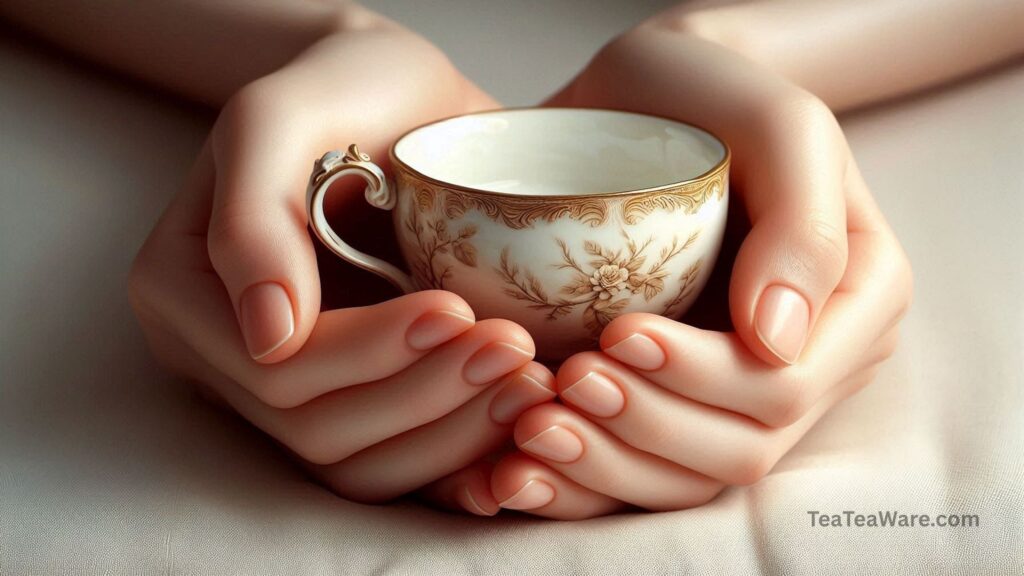
- Always lift teapots by their handles and cups by their bodies. Avoid gripping lids or rims, which can chip or crack easily.
- Never stack fragile cups. Even the light pressure of one cup resting inside another can cause hairline cracks over time.
- Use padded dividers or soft cloth separators when storing multiple items together.
👉 Think of your teaware as a mini art collection—each piece has craftsmanship and history behind it. By treating it gently, you’re preserving not just functionality but beauty.
2. Clean Right After Using
Tea stains, if left unattended, can be stubborn and even affect the flavor of future brews. Cleaning teaware promptly is one of the easiest ways to maintain its quality.
Best Practices:
- Rinse right away. Even clear teas like green tea can leave behind tannin stains.
- Use warm water and a soft sponge. Avoid strong detergents unless absolutely necessary.
- Avoid abrasive scrubbing. For stubborn marks, make a paste of baking soda and water and gently rub with a soft brush.
💡 Tip for Yixing Clay Teapots:
Never use soap. These unglazed clay pots absorb flavors, and over time, they build a rich “seasoning” that enhances tea flavor.
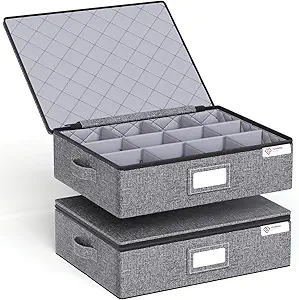
Cup and Mug Storage Box with Hard Shell
Designed specifically to store teacups and small mugs, this case has soft padding and individual compartments to prevent chips or cracks.
Also Read: Best Teas for Stress Relief and the Teaware to Use
3. Care Based on Material
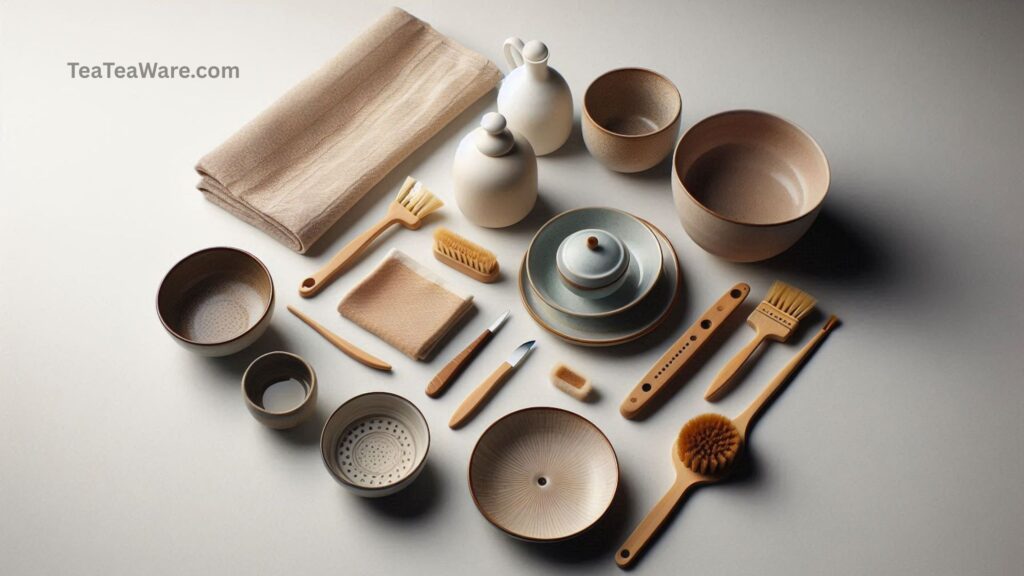
Not all teaware is created equal. Different materials require different cleaning and storage techniques:
| Material | Care Tips |
|---|---|
| Yixing Clay | Never use soap. Rinse with hot water only. Enhances flavor with use. |
| Porcelain | Wash with mild soap and warm water. Avoid harsh scrubbers. |
| Ceramic | Similar to porcelain, but check for glazes that may stain. |
| Glass | Use only heat-resistant glass. Avoid sudden temperature changes to prevent cracks. |
| Cast Iron | Rinse and dry immediately to prevent rust. Season occasionally with tea. |
💡 Real-World Insight:
Collectors often say a Yixing teapot improves with age. The patina (tea stain) that develops inside adds depth to your tea’s aroma and taste.
4. Store the Right Way
Even perfectly cleaned teaware can be ruined if stored poorly. Scratches, chips, mold, or fading are all risks.
Storage Tips:
- Dry thoroughly before storing. Moisture encourages mold.
- Use dividers and padding. Foam inserts, padded boxes, or shelf liners prevent chips.
- Pick the right spot. A cool, dry cupboard away from sunlight is best.
👉 If you love displaying your collection, open shelving works well—just ensure pieces are stable and dusted regularly.
📦 Pro Idea: Use a cup and mug storage box with a hard shell for seasonal or rarely used pieces. This keeps them safe during moves or when not on display.

Spice Rack Kitchen Cabinet Organizer
A stylish and sturdy solution for displaying and separating teapots, cups, or saucers — prevents stacking damage and keeps everything visible.
Also Read: Tea vs Coffee: Health Benefits and Brewing Gear
5. Watch the Temperature
One of the main causes of cracks in teaware is thermal shock—a sudden change in temperature that stresses the material.
How to Prevent It:
- Warm up teapots before use. Pour a little hot water into your pot and swirl before brewing.
- Avoid cold rinses on hot pots. Let items cool down naturally before cleaning.
- Don’t store near heat sources. Avoid placing teaware next to stoves or heaters.
Imagine teaware as delicate as your skin—it needs gradual changes to adapt safely.
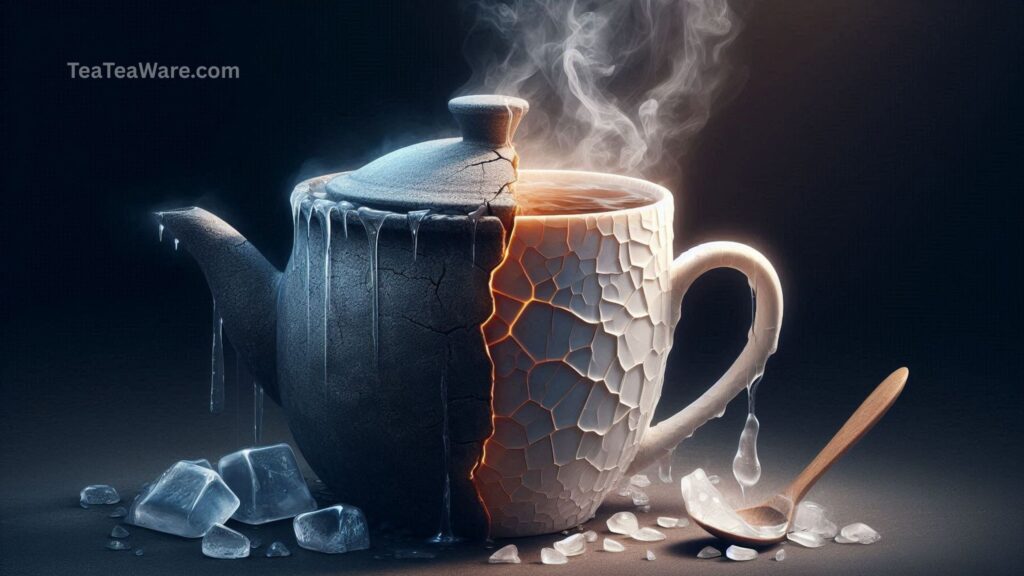
6. Give It a Deep Clean Sometimes
Even with regular rinsing, a deeper clean every few months helps maintain teaware.
Methods:
- Porcelain or Glass: Soak in warm water with a splash of white vinegar to remove deep stains.
- Yixing Clay: Simply brew a strong tea inside—tea itself will clean and season the clay.
- Stubborn stains: Baking soda paste + gentle scrubbing.
💡 For storage areas, line shelves with non-slip, padded liners to prevent scratches.

Drymate Premium Luxury Shelf & Drawer Liner
A subtle but effective way to protect teaware from scratching or cracking on hard shelves or inside cabinets.
Also Read: Best Teaware on Amazon (Top Picks Under $50)
7. Rotate Your Collection
If you own multiple teapots or cups, don’t let just one set take all the wear and tear.
- Rotate your favorites weekly or monthly. This spreads out the usage evenly.
- Enjoy your full collection. Rotating prevents some items from becoming “too precious to use.”
- Collectors’ tip: Displaying seasonal teaware (e.g., floral cups in spring, earthy tones in autumn) adds variety and freshness to your tea ritual.
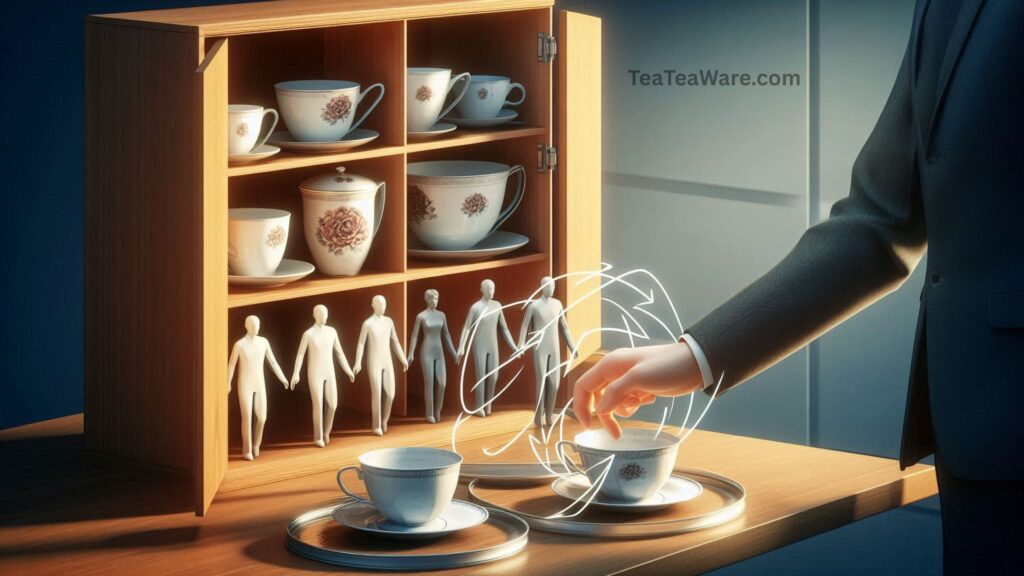
Conclusion
Caring for teaware isn’t just about preventing cracks—it’s about honoring craftsmanship and creating a better tea experience.
By:
- Handling pieces gently
- Cleaning right after use
- Storing them correctly
- Avoiding sudden temperature changes
- Rotating your collection
…your teaware will remain not just functional, but also a source of beauty and enjoyment for decades.
👉 Ready to elevate your tea ritual? Explore handcrafted teaware collections that combine tradition with durability at Gohobi.
Frequently Asked Questions (FAQs)
Q1. Can I use dishwasher-safe teaware in the dishwasher?
Even if labeled dishwasher-safe, handwashing is best. Dishwashers cause micro-cracks and thermal shock over time.
Q2. How do I prevent my teacups from staining?
Rinse immediately after use. For stubborn stains, use baking soda paste or soak in warm vinegar water.
Q3. Is it safe to stack porcelain cups?
Avoid stacking fragile cups. Use padded dividers or individual storage compartments.
Q4. How often should I deep clean my teaware?
Every 2–3 months, or sooner if stains persist. Yixing clay needs minimal cleaning—just hot water or a tea rinse.
Q5. Can sunlight damage teaware?
Yes. Prolonged exposure can fade painted designs and weaken materials. Always store in a shaded area.


